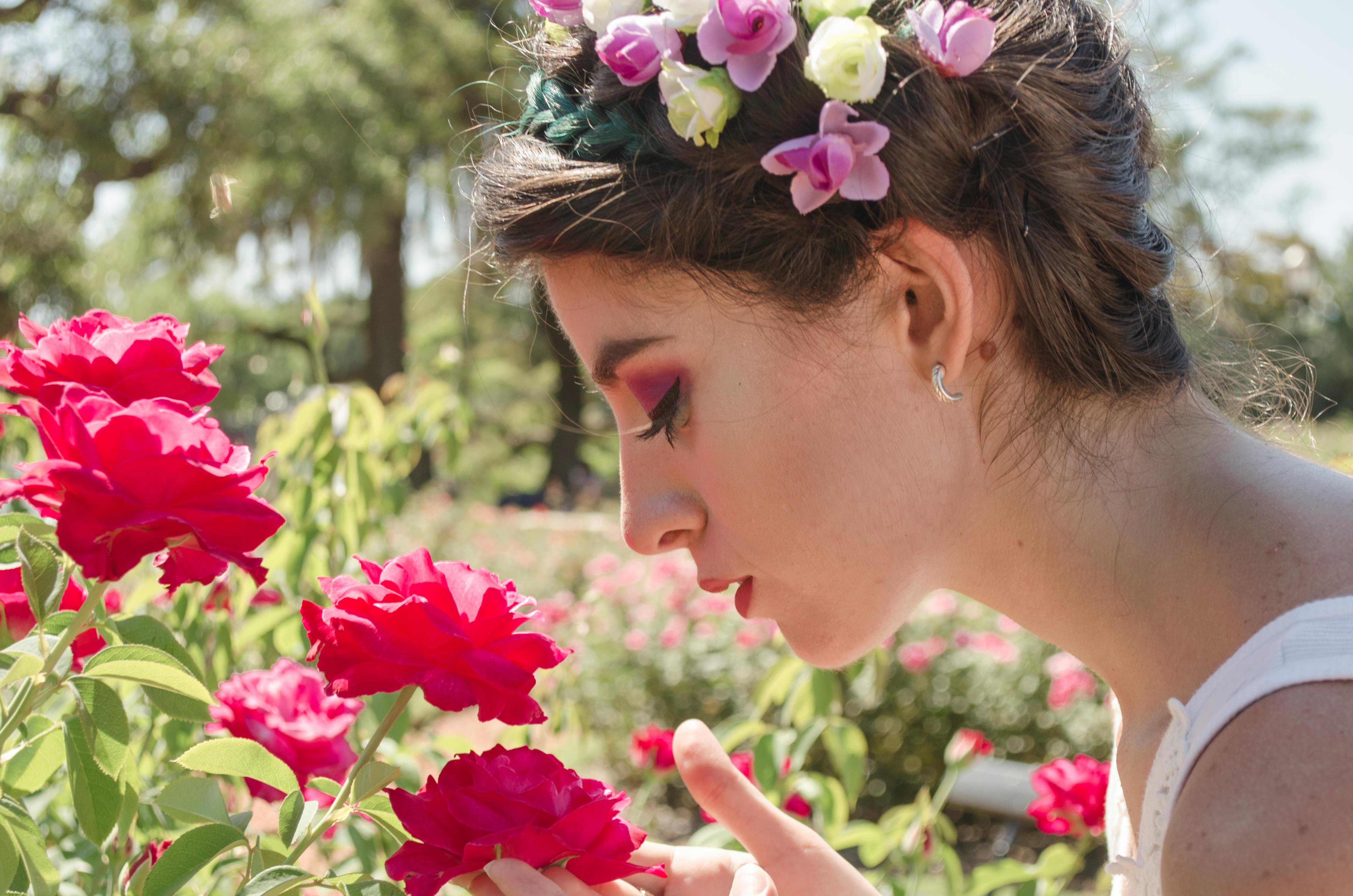Beargrass wildflowers are best known for their use by Native Americans as a material for weaving baskets. The fibrous leaves turn from green to white as they dry and are tough and durable. The leaves can also be dyed and are flexible enough to be woven into tight, waterproof fabrics. Eastern prairie tribes also used the boiled roots of bearweed wildflowers as a hair tonic and to treat sprains.
Bear grass wildflowers are still used today for basket weaving. More recently, beargrass wildflowers have become an important and enduring green in bouquets. Many national forests are now issuing permits for the harvest of bear grass wildflowers for commercial use. Beargrass wildflowers can be grown in gardens in well-drained soil. Do not overwater and do not use commercial fertilizers. Tree needle humus and mulch will make your beargrass wildflowers feel right at home.
Beargrass wildflowers are an evergreen herb in the lily family. Colonies of the perennial wildflower beargrass, also known as squaw grass, soap grass, and Indian basket grass, bloom in three- to seven-year cycles. The tall flower stalks can be up to six feet tall with numerous small white flowers. The conical shape of the flowers makes bear grass wildflowers easily recognizable.
Beargrass wildflowers are an important part of the ecosystem in the Rocky Mountains, Sierra Nevada, and Coastal Ranges. Bear grass wildflowers grow well in fairly dry and cool sites. Beargrass wildflowers provide food for at least forty species of insects, which in turn pollinate the grass. Many large game animals, including deer and elk, also prefer beargrass wildflowers. Pocket gophers and other rodents feed on beargrass wildflowers and grizzly bears sometimes use beargrass wildflowers as winter nesting material for their dens.
Bear grass wildflowers have long, thin leaves with jagged edges that spread from the base. The central stem has short leaf-like extensions along its length. Beargrass wildflowers are an important part of fire ecology and thrive on periodic burns. Bear grass wildflower rhizomes survive fires that remove plant matter from the soil surface. Beargrass wildflowers are often the first plant to sprout in burned areas.
Another easily recognizable wildflower, bitter root, has been an icon in its home state of Montana for centuries. Also known as the resurrection flower, the plant is legendary for its ability to live for more than a year without water. The stem of Bitter Root wildflowers is so short that the flower appears to almost perch on the ground. Also, the leaves die when the flower blooms, leaving the appearance of a flower emerging directly from the ground. For this reason, bitter root wildflowers are also called rockroses. Meriwether Lewis collected bitter root wildflowers on the famous Lewis and Clark expedition.
The bitter root wildflower became Montana’s state flower by popular vote in 1895. The bitter root wildflowers have lent their name to a mountain range, a river, and the famous Bitterroot Valley. An annual two-day bitter root wildflower festival is held in this valley each year to celebrate the versatile bitter root plant.
Bitterroot wildflowers are low-growing perennials with fleshy tap roots and a branching base. Bitterroot wildflowers bloom in May and June. Each bitten root wildflower plant bears a single flower that ranges in color from white to deep pink or rose.
The roots of bitterroot wildflowers were considered a luxury and could be traded with other indigenous tribes as well as pioneers and hunters. A sack of the valuable prepared roots could be exchanged for a horse.
Bitter root wildflowers were an important part of the Montana Indian diet. Many Montana tribes, including the Flathead, Spokane, Nez Perce, Kalispell, and Pend d’Oreille, timed their spring migration with the blooming of bitter root wildflowers. The roots were collected near what is now Missoula. After cleaning and drying, the roots were a light and nutritious snack. The roots were cooked before eating and were usually mixed with meat or berries. Cakes from the cooked root could be carried and eaten while travelling.
A less familiar western wildflower is the owl clover. Owl Clover wildflowers are members of the snapdragon family (scrophulariaceae, Orthocarpus). This family has 4500 species worldwide. The name Orthocarpus comes from the Greek orthos, straight, and karpos, fruit. Owl Clover wildflowers are closely related to Indian paintbrushes. The origin of the common name is obscure, although owl clover wildflowers somewhat resemble an owl’s head and feathers. Owl clover wildflowers are not directly related to other types of clover.
Owl’s Clover wildflowers grow on low-lying ground in dry, open sites such as prairies in most of Montana. Owl clover wildflowers also grow in Canada, Minnesota, California, Nebraska, New Mexico, and northwestern Mexico.
Owl Clover wildflowers are winter annuals six to eight inches tall. The yellow, white or purple “petals” are actually bracts that surround very small and almost hidden yellow flowers. The leaves alternate along the stem and may have two narrow lateral lobes. Owl Clover wildflowers are in narrow spikes and bloom a few at a time. A single owl clover wildflower plant can bear dozens of flowers during an entire growing season. Owl Clover wildflowers are a partial parasite that depends on the root system of other plants.
Owl Clover wildflowers are mentioned in Meriweather Lewis’ journal on July 2, 1806. Owl Clover wildflowers were fully described in 1818 by English botanist Thomas Nuttall during explorations of what is now North Dakota. North.
The Indian paintbrush, on the other hand, is probably the most recognizable Western wildflower. Indian paintbrush wildflowers can be orange, red, or yellow in color. The bright, flower-like bracts are not the true flower, but almost completely hide small inconspicuous yellow flowers. Indian paintbrush wildflowers are also known as fire meadows and grow in dry, sandy areas as well as moist areas. Indian paintbrush wildflowers can be found both on mountain slopes and in open meadows.
Indian paintbrush wildflowers were adopted as the state flower of Wyoming in 1917. The name comes from the fact that some Native American tribes used the bracts as paintbrushes.
The roots of Indian paintbrush wildflowers are partially parasitic on other plant roots. Indian paintbrush wildflowers typically grow 1 to 2 feet tall. Indian paintbrush wildflowers have the ability to grow in soils that are high in magnesium, low in calcium, and have high amounts of metals such as chromium and nickel. Although Indian brush wildflowers are edible, they will absorb selenium and therefore cannot be eaten in large quantities when taken from selenium-rich soils.
Indian paintbrush wildflowers were used by the Chippewa Indians to treat rheumatism and as a hair rinse. Both uses of Indian brush wildflowers come from the high selenium content in some brush plants.
Another fascinating western wildflower is the snowberry. Western snowberry wildflowers are part of the honeysuckle family. Snowberry wildflower bushes grow up to 3 feet tall and spread via rhizomes, forming colonies of fruit-bearing plants. Snowberry wildflowers are white to light pink at the ends of twigs and upper leaf axils. The common snowberry is a popular shrub in gardens due to its decorative white fruit.
Snowberry wildflowers are an important winter food source for birds, including quail, pheasants, and grouse. Snowberry wildflowers are a starvation food for humans due to their bitterness and the presence of saponins in the berries. Saponins, a substance also found in many beans, can be destroyed by cooking.
Snowberry wildflowers have extensive root systems and can be used to stabilize soils on banks and slopes. Snowberry wildflowers grow in open grasslands and along streams and lakes in Montana, Washington, Utah, New Mexico, Minnesota, and Canada.
Saponins are quite toxic to some animals such as fish. Native Americans place large numbers of snow berries in streams and lakes as a fishing technique to stun or kill fish. An infusion of snowberry wildflower roots has also been used for inflamed or weak eyes and to aid in convalescence after childbirth.
The branches of the snowberry wildflower bush can be made into brooms. The shrub is also very tolerant of pruning and can be grown as a medium to tall hedge.
A very unique western wildflower is the yucca flower. Yucca wildflowers are one of forty different species that inhabit the southwestern United States and Mexico. Some non-desert species also live in the southeastern United States and on the Caribbean islands. Yucca wildflowers are pollinated by a specific moth. In the absence of this moth, yucca wildflowers must be hand-pollinated to survive.
Yucca wildflowers belong to the Liliaceae family, as indicated by their bell-shaped, cream-colored flowers. Yucca wildflowers are actually trunkless shrubs that are also related to the yucca or tapioca family. Yucca wildflower leaves contain strong fibers that can be used to make rope. Yucca wildflower roots contain a natural red dye used for baskets.
A tea from the yucca wildflower buds has been used to treat diabetes and rheumatism. The buds can be eaten like bananas. Wild yucca flowers can be cooked and ground to make a sweet, called colache. The yucca wildflower is the state flower of New Mexico.
The study of western wildflowers is fascinating because of their many different uses and their adaptability to harsh climates. Among the rugged Rocky Mountains, western wildflowers add a touch of delicate beauty.



